
CANADIAN JOURNAL OF PHYSICS
Scope & Guideline
Elevating physics discourse with every publication.
Introduction
Aims and Scopes
- Experimental Physics:
The journal publishes research that involves experimental approaches to investigate physical phenomena, including materials science, condensed matter physics, and applied physics. - Theoretical Physics:
Theoretical contributions, including mathematical modeling, quantum mechanics, and cosmology, are central to the journal's scope, providing insights into fundamental principles and new theoretical frameworks. - Computational Physics:
Studies employing numerical simulations, computational modeling, and data analysis are highlighted, particularly those that explore complex systems or phenomena that are challenging to analyze analytically. - Astrophysics and Cosmology:
Research in this area covers topics such as black holes, dark energy, and cosmic evolution, contributing to our understanding of the universe and its fundamental properties. - Materials Science and Nanotechnology:
The journal supports research on the properties and applications of new materials, including nanomaterials, with a focus on their electronic, optical, and mechanical characteristics. - Interdisciplinary Research:
The journal encourages interdisciplinary studies that bridge physics with other fields such as chemistry, biology, and engineering, promoting innovative approaches and applications.
Trending and Emerging
- Quantum Computing and Information:
There is a significant uptick in research related to quantum computing, quantum information theory, and related technologies, as the field is rapidly evolving with the potential to revolutionize computation and secure communications. - Dark Matter and Dark Energy Studies:
Research focusing on dark matter and dark energy has gained momentum, driven by advancements in observational astrophysics and theoretical models aiming to explain the universe's accelerated expansion. - Nanophysics and Nanotechnology:
The journal is increasingly publishing studies on nanostructured materials and their applications in various fields, reflecting a growing interest in their unique properties and potential technological applications. - Complex Systems and Nonlinear Dynamics:
Emerging interest in complex systems and nonlinear dynamics is evident, with research exploring intricate interactions within physical systems and their implications across various disciplines. - Interdisciplinary Applications of Physics:
There is a growing trend towards interdisciplinary research that applies physical principles to solve problems in biology, materials science, and engineering, indicating a broadening of the journal's scope.
Declining or Waning
- Classical Mechanics:
Research specifically centered on classical mechanics appears to be waning, possibly due to the growing emphasis on quantum mechanics and relativistic physics, which offer more complex and relevant frameworks for current scientific inquiries. - Purely Theoretical Models without Experimental Validation:
There has been a noticeable decrease in purely theoretical studies that lack experimental backing. This trend may reflect a shift towards more applied research that can demonstrate practical relevance and validation through empirical data. - Traditional Solid-State Physics:
Topics in traditional solid-state physics are becoming less prominent as the field evolves towards more complex materials and nanostructures, which require new methodologies and approaches. - Low-Energy Nuclear Physics:
The focus on low-energy nuclear physics has diminished, potentially due to the increasing interest in high-energy physics and astrophysical implications of nuclear interactions.
Similar Journals
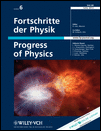
FORTSCHRITTE DER PHYSIK-PROGRESS OF PHYSICS
Pioneering Insights for the Next Generation of PhysicistsFORTSCHRITTE DER PHYSIK-PROGRESS OF PHYSICS, published by WILEY-V C H VERLAG GMBH, is a prestigious academic journal esteemed within the field of physics. With a history spanning over seven decades since its inception in 1953 and a converged publication up until 2024, this journal has established itself as a leading source for groundbreaking research and developments across diverse domains in physics and astronomy. Holding an influential Q1 ranking in the 2023 category of Physics and Astronomy (miscellaneous), it serves as an essential platform for disseminating high-quality research findings and theoretical advancements. Although not an Open Access publication, FORTSCHRITTE DER PHYSIK provides access to critical insights and scholarly discussions that are pivotal for researchers, professionals, and students alike. The journal is committed to contributing to the evolution of knowledge in physics, supporting the academic community through rigorous peer-reviewed articles, reviews, and innovative studies.
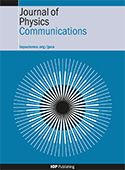
Journal of Physics Communications
Advancing Physics Through Open DialogueJournal of Physics Communications, published by IOP Publishing Ltd, serves as a significant platform for the dissemination of innovative research in the realm of physics and astronomy. Since its inception in 2017, this Open Access journal has fostered a collaborative environment, allowing researchers, professionals, and students to share their findings and ideas without barriers. With an ISSN of 2399-6528, the journal has established its credibility in the academic community, achieving a ranking of Q3 in the 2023 category of Physics and Astronomy (miscellaneous), as well as a respectable position in Scopus with a rank of #122 out of 243 in its field. The journal's focus is on bridging theoretical concepts and practical applications, making it an essential resource for those engaged in the evolving landscape of physics. The Journal of Physics Communications not only aims to advance knowledge but also to inspire interdisciplinary collaboration, inviting contributions from diverse areas within physics. Authors and readers alike will find this journal particularly beneficial to stay updated on emerging trends and innovative research.

Journal of Physical Studies
Advancing the Frontiers of Physics and AstronomyJournal of Physical Studies, published by the WEST UKRAINIAN PHYSICAL SOC, is a prominent academic journal dedicated to disseminating research in the field of physics and astronomy. Established in 2004 and continuing through to 2024, the journal aims to provide a platform for original research, reviews, and innovative theoretical developments that contribute to the understanding and advancement of physical sciences. With an ISSN of 1027-4642 and E-ISSN of 2310-0052, this journal is recognized for its commitment to fostering scholarly communication within the scientific community. Although currently listed in Q3 of the Physics and Astronomy category, it has the potential for upward trajectory, as evidenced by its ranking of #192 among 243 journals in the general physics category (2023 Scopus Ranks). Situated in Lviv, Ukraine, this journal plays a vital role in enriching the academic landscape, particularly among researchers, professionals, and students seeking access to critical insights and developments in physics. Readers can explore research articles, fostering a collaborative and expansive view of current trends and advancements in the field.

Universe
Empowering Researchers to Illuminate the Cosmos.Universe is a distinguished peer-reviewed journal published by MDPI, specializing in the dynamic fields of Physics and Astronomy. Established in 2015, this Open Access journal has rapidly gained recognition, achieving a prestigious Q1 quartile ranking in its category as of 2023. With its E-ISSN 2218-1997, the journal primarily serves the international scientific community, offering a platform for researchers to disseminate innovative ideas and findings. Based in Switzerland, Universe covers a wide range of topics within astronomy and astrophysics, ensuring that cutting-edge research is accessible to an ever-growing audience. Its commitment to open access principles since its inception allows for unrestricted dissemination of knowledge, fostering a collaborative environment essential for scientific advancement. By aligning its objectives with the promotion of high-quality research and interdisciplinary discourse, Universe stands as a vital resource for academics, professionals, and students aiming to contribute to and engage with the ever-evolving landscape of astronomical research.

PHYSICAL REVIEW LETTERS
Advancing the Frontiers of Physics and AstronomyPhysical Review Letters, published by the American Physical Society, is a premier journal in the field of Physics and Astronomy renowned for its rapid dissemination of high-impact research findings. With a distinguished history dating back to 1958 and an impressive ranking of #13 out of 243 in the general physics category, it stands proudly within the Q1 quartile, placing it in the top 6% of journals in its field. The journal focuses on brief reports of significant fundamental research across all areas of physics, making it an essential resource for researchers, professionals, and students seeking to stay at the forefront of developments in their field. Although Physical Review Letters does not offer open access options, its rigorous peer-review process ensures a high standard of quality and relevance in its published articles. With an unwavering commitment to advancing the understanding of physical science, this journal is indispensable for those looking to make a genuine impact in their research endeavors.
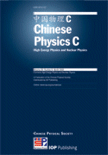
Chinese Physics C
Elevating Knowledge in Nuclear and Astrophysical SciencesChinese Physics C is a premier, peer-reviewed journal published by IOP Publishing Ltd, dedicated to advancing knowledge in the fields of Astronomy and Astrophysics, Instrumentation, and Nuclear and High Energy Physics. With an impressive impact factor reflecting its standing in the Q1 quartile across multiple categories, this journal serves as a vital resource for researchers, professionals, and students seeking to engage with cutting-edge developments and experimental findings. Since its inception in 2008, Chinese Physics C has fostered significant collaborations and discussions within the global physics community, enabling easy access to high-quality research through its open access options. Operating from the United Kingdom with a commitment to excellence, this journal not only showcases high-impact papers but also encourages innovative methodologies and interdisciplinary approaches, solidifying its role as an essential platform for dissemination and dialogue in the rapidly evolving landscape of physics.
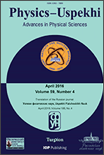
PHYSICS-USPEKHI
Advancing Knowledge in Theoretical and Experimental PhysicsPHYSICS-USPEKHI, published by Uspekhi Fizicheskikh Nauk, is a prominent peer-reviewed journal in the field of physics and astronomy, reaching researchers and professionals since its inception in 1993. With an ISSN of 1063-7869 and an E-ISSN of 1468-4780, this esteemed journal has been classified as Q2 in the Physics and Astronomy category based on the 2023 quartiles, ranking 74 out of 243 journals in its Scopus classification, placing it in the 69th percentile. Although currently not an open access journal, it provides invaluable insights and advancements in the field, fostering an environment for scholarly exchange and collaborative research. Based in Moscow, Russia, PHYSICS-USPEKHI continues to shape the landscape of theoretical and experimental physics, inviting submissions that contribute to its rich legacy of high-impact scientific discourse.
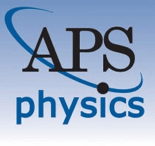
PHYSICAL REVIEW D
Connecting Scholars to the Pulse of Modern PhysicsPHYSICAL REVIEW D, published by the American Physical Society, is a premier journal dedicated to the rapid dissemination of significant research findings in the fields of Nuclear and High Energy Physics as well as Physics and Astronomy. With an impressive Impact Factor and a prestigious Q1 ranking in 2023, it stands as one of the leading journals in its domain, with a Scopus ranking of #6 out of 87 in its category, placing it in the 93rd percentile. The journal welcomes rigorous theoretical and experimental studies that advance understandings in particle physics, cosmology, and quantum field theory. Although it does not provide open access, researchers gain a significant platform to reach a global audience and contribute to the ongoing discourse within the scientific community. Published regularly since its convergence starting in 1989, it remains essential for both emerging and established scholars looking to stay at the forefront of high-energy and nuclear physics research.

Jurnal Fizik Malaysia
Empowering Researchers to Illuminate the World of Physics.Jurnal Fizik Malaysia is a prominent academic journal dedicated to advancing the field of physics, published by the esteemed Institut Fizik Malaysia. With an aim to foster knowledge dissemination and research collaboration among physicists, the journal serves as a vital platform for original research articles, reviews, and technical notes that cover various sub-disciplines of physics. Although the journal operates under a traditional subscription model, its commitment to quality has been bolstered by a rigorous peer-review process, ensuring high academic standards. Researchers and students in Malaysia and beyond are encouraged to engage with this journal, contributing to a deeper understanding of physical sciences and its applications. Moreover, with its ISSN 0128-0333, Jurnal Fizik Malaysia continues to play a significant role in the scientific community, enhancing visibility and accessibility for local and international research outputs in the ever-evolving landscape of physics.

INDIAN JOURNAL OF PHYSICS
Catalyzing Discussions in the Realm of PhysicsINDIAN JOURNAL OF PHYSICS, published by the Indian Association for Cultivation of Science, serves as a pivotal platform for researchers and scholars in the field of physics and astronomy. With its ISSN 0973-1458 and E-ISSN 0974-9845, this journal is committed to presenting innovative research and developments across diverse topics in physics, covering both theoretical and experimental studies. The journal has made its mark in the academic community, evidenced by its classification in the Q3 category within the Physics and Astronomy domain as of 2023, and ranks #100 out of 243 in the Scopus curated database, placing it in the 59th percentile. Spanning from 2005 to 2024, the INDIAN JOURNAL OF PHYSICS aims to foster knowledge exchange and stimulate discussions among physicists and scientific enthusiasts. Whether you are a researcher looking to publish your findings, a professional seeking updates in your field, or a student eager to explore varying aspects of physics, this journal is an invaluable resource contributing significantly to the understanding and advancement of physics in India and beyond.